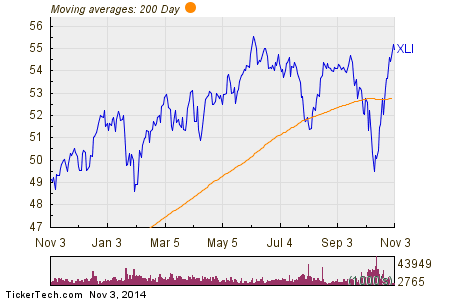The Hidden Truth Behind ETF Inflows
Post on: 12 Сентябрь, 2015 No Comment

Follow Comments Following Comments Unfollow Comments
The following is a guest post from Dave Lutz, Head of ETF Trading Strategy at Stifel Nicolaus. This information is strictly trader commentary and not the work of the Stifel Nicolaus Research Department.
————————————————————————-
When data-mining exchange-traded funds, professional traders tend to focus on several factors. A few that come to mind are relative performance against other ETFs. deviation from underlying asset value, or the underlying options activity.
Some of the most important data points–to investors, traders and issuers–are the inflows into an ETF. Specifically, how many net new assets are rolling up into the ETF and increasing the number of shares outstanding.
But looking at inflows, which make for nice headlines, doesn’t tell the whole story. In fact, inflows alone can obscure short pressure building on an ETF.
To understand how this is the case, it’s worth getting a handle on the creation/redemption mechanism, a unique feature of ETFs. Only an Authorized Participant (AP)–a broker designated by fund families and meeting specific counterparty criteria–can create new shares of an ETF. As an AP, the broker takes the basket of underlying securities which comprise the ETF and delivers that basket to the issuer. In turn, the AP receives newly created shares of the ETF for delivery to their clients. On the other hand, if the client decide he no longer wants the ETF shares, he can redeem the shares through the AP. The broker returns the ETF shares to the issuers, and receives the underlying basket of securities in return.
This creation/redemption mechanism is very important to the stability of the ETF market.
First, creation/redemption helps increase the liquidity of ETFs. The stocks in the underlying basket tend to have a tremendous amount of volume relative to the ETF itself. By going through the creation process, investors can tap into the liquidity of those underlying stocks–and improve ETF volumes. Second, creation/redemption allows the ETF market to be quite efficient in proper pricing to the underlying issues.
If an ETF were to start deviating away from the net asset value (NAV) of that underlying basket, say becoming less valuable, APs can sell the underlying stocks, and create new issues of the ETF to arbitrage away that discount.
Most ETFs trade very close to NAV. But not always. Earlier this year, the issuer of TVIX, an exchange-traded note, closed creations and TVIX went to a 90% premium above its representative index. The note became unhinged and looked more like a closed-end fund. Once the parent reopened creations, this deviation corrected very quickly.
You might think an ETF taking assets through creation is very bullish not only for the ETF, but also for the underlying stocks. After all, if there is more investor interest in an ETF – it would seem logical this is a bullish indicator for the underlying. In 2008, however, creations in the SPDR S&P 500 Trust (SPY) jumped 125% right as the S&P 500 Index was taking a 50% hit.
That’s right, demand for SPY surged significantly, and the underlying issues were hit for the following nine months.
So, how is this possible?
The answer lies with prime brokerage desks – the big players that actively lend out shares for shorting. When an investor feels a stock is overvalued, his broker contacts a prime broker to borrow the shares. If the investor is correct, and the shares drop, the investor realizes a profit when those shares are returned to the prime broker.

Prime brokers make money by charging an overnight “lending fee” to the investor. That lending fee is determined by simple supply and demand. If not many investors believe shares will drop, those lending fees are relatively small.
In some instances, however, when investor skepticism reaches a fevered pitch, lending fees widen out quickly as demand to short outweighs available shares from prime brokers for shorting.
Back to ETF creations. If investor skepticism in an ETF jumps higher, prime brokers can create new shares, specifically to be lent out for shorting. This gets more attractive to the prime brokers as lending rates widen out, and the overnight fee they charge gets more profitable for them.
ETF issuers are agnostic towards this type of creation, as any creation increases assets under management.
Here’s the catch. Can you identify from daily inflows if a creation was for buying the ETF or for shorting, as it may have been for SPY back in 2008?
There are several footprints to look for.
First, as was the case for the the week ending June 8th, there were massive redemptions from mutual funds by retail investors. Almost $2.2 billion, according to Lipper. Simultaneously, there were huge inflows into ETFs. U.S. equity ETFs gained $9 billion. This is a large disconnect, even when you factor in the overall trend from Mutual Funds to ETFs – and skew from a large options expiry upcoming.
Second, SPY loan volume went from 91 million shares to 113 million shares over that period–a difference of 22 million shares. Given that the average price of SPY over that period was $132, that equates to $2.8 billion in SPY shares lent short. Creations into SPY over that week equated to $2.1 billion, thus its possible the bulk of those creations were for shorting.














